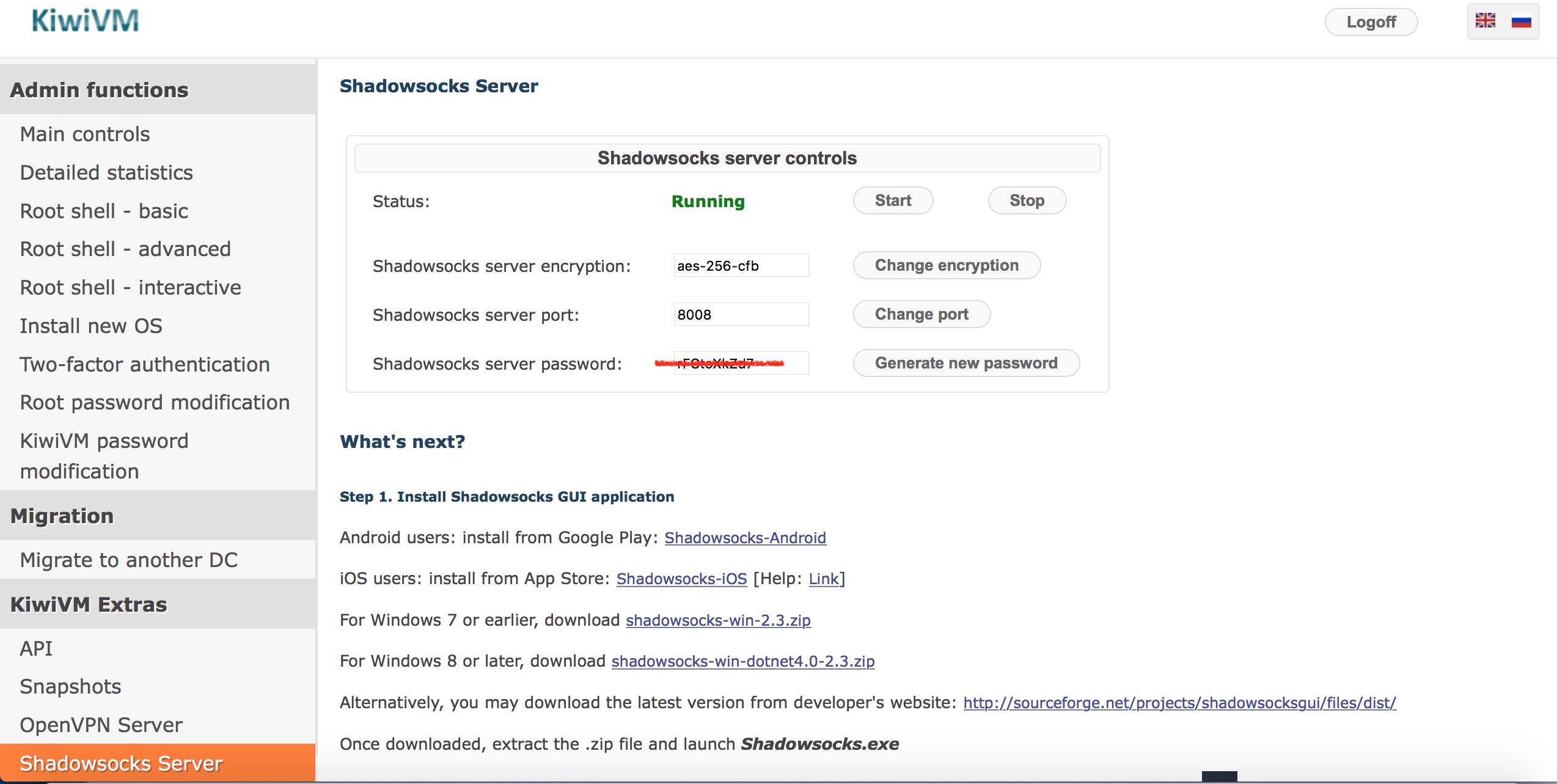

- #Shadowsocks server how to#
- #Shadowsocks server full size#
- #Shadowsocks server update#
- #Shadowsocks server software#
For support regarding the tool or software itself, visit the Shadowsocks Discourse. For support regarding app deployment, contact Linode Support via the information listed in the sidebar. The Shadowsocks Marketplace App was built by Linode. This is the Shadowsocks Password field you created when initially deploying your app.Īfter configuration, your Server Preferences should be similar to the following image: Set to use the aes-256-cfb encryption mode. The Shadowsocks One-Click App connects through port 8000 by default. Can be found in the Linodes section of the Cloud Manager. When the client has completed the installation process, ensure that you’re setting up your client to connect using the following unique information: CONFIGURATION
#Shadowsocks server how to#
There are currently client services available for Windows, Mac OS X, Linux, Android, and iOS.įor a full set of instructions on how to install Shadowsocks on Windows and Mac OS X, see the Install a Shadowsocks Client section of our guide for Creating a Shadowsocks Server Manually. Once the Shadowsocks server is up and running, you must install the Shadowsocks Client on any device or devices that you’d like to have connect to the service. Enter a unique password into Shadowsock Password field to be used in a later step. Successful connection will look like this Dropbox with shadowsocks Google Chrome with shadowsocksīypass proxy settings for host and domains localhost, 127.0.0.The Shadowsocks proxy requires a separate Shadowsocks Password to authenticate to the service from your client. View status: /etc/init.d/shadowsocks status OSX Shadowsocks client How to install Shadowsocks client on Macīrew install shadowsocks-libev Connecting to the serverĮxample ss-local -s 123.123.123.123 -p 1234 -b 127.0.0.1 -l 1080 -k 1 -m aes-256-cfb If you need to do more here are the commands to do it Method - (I recommend you choose aes-256-cfb because its more accepted Usage commands Port number - (you can keep these default 8399 or choose something else) Password - (type in a password that you will remember shadowsocks-libev-debian.sh 2>&1 | tee shadowsocks-libev-debian.log

Sudo chmod +x shadowsocks-libev-debian.sh Sudo wget -no-check-certificate -O shadowsocks-libev-debian.sh
#Shadowsocks server full size#
Setting up shadowsocks full size If you want to install the newest version of shadowsocks follow this ssh to your server - (examples above) Make sure you set up the firewall rules correctly. If your having trouble connecting read agian. Lets make a connection with a client now using mac os shadowsocks Type telnet and ip of your external ip and port number


We need to create a static ip address for the server The internal ip address can be found on the instance area. Sudo vim /etc/shadowsocks-libev/config.jsonĮnter your internal ip address in the server – so my internal ip was 10.138.0.3
#Shadowsocks server update#
Type in these commands to install shadowsocks sudo apt update Here we select the SSH button on it opens up SSH This is very important for shadowsocks to work. We have to make a change to the google firewall for shadowsocks to connectĬopy my setting that I have in this photo. shadowsocks 2.8.2 pip install shadowsocks Copy PIP instructions Latest version Released: A fast tunnel proxy that help you get through firewalls Project description A fast tunnel proxy that helps you bypass firewalls. Take note of the internal id and the external id. I am using linux Debian for this tutorial As of v2.8, GOST supports AEAD cipher based on shadowsocks/go-shadowsocks2. Setup your google cloud console and create an instance in google cloud consoleĬreate the instance also known as virtual machine. Setup shawdowsocks server using google cloud console shadowsocks with mac os and ios


 0 kommentar(er)
0 kommentar(er)
